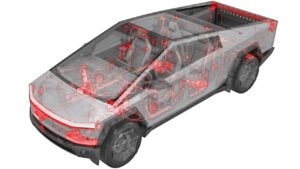Looking to stay warm in a pinch? If you’re wondering how to make a heater with a battery, you’ve come to the right place. We’ve got a simple solution that will help you create a portable heating device using just a few household items. No need to worry about being caught in the cold anymore – with this DIY heater, you’ll be able to stay cozy wherever you go. Let’s dive in and learn how to make a heater with a battery.
How to Make a Heater with Battery
Heaters are essential appliances, especially during cold winter months. Most heaters rely on electricity or gas to generate heat. However, there may be instances where access to electricity or gas is limited, such as during outdoor activities or power outages. In such cases, knowing how to make a heater with a battery can be incredibly useful. This article will guide you through the process of creating a battery-powered heater, providing detailed instructions and tips along the way.
Materials Needed
Before we dive into the step-by-step process of making a battery-powered heater, let’s gather the necessary materials:
- A battery-powered fan
- A ceramic heating element
- A metal enclosure (such as a small metal box)
- Insulation material (such as fiberglass or ceramic wool)
- Electrical wires
- A battery pack or rechargeable batteries
- A power switch
- A soldering iron and solder
- Basic hand tools (such as pliers and wire cutters)
- Safety goggles and gloves
Step 1: Prepare the Enclosure
The first step in creating a battery-powered heater is to prepare the metal enclosure. This enclosure will house the heating element and provide protection. Follow these steps:
- Choose a metal box that can comfortably fit the heating element and the fan. Ensure that it has ventilation holes for air circulation.
- Wear safety goggles and gloves to protect yourself from sharp edges.
- If necessary, drill holes in the enclosure for mounting the fan and attaching the wires.
- Clean the enclosure to remove any debris or contaminants.
Step 2: Install the Heating Element
Next, we’ll install the ceramic heating element inside the metal enclosure. This component will generate the heat. Follow these steps:
- Ensure the heating element is compatible with the battery voltage and can be safely operated.
- Identify the positive and negative terminals on the heating element. Most heating elements have red for positive and black for negative.
- Place the heating element inside the metal enclosure, making sure it is securely attached and centered.
- Attach the wires to the positive and negative terminals of the heating element. Use a soldering iron and solder to create secure connections.
- Route the wires through the holes in the enclosure and secure them in place using cable clips or similar fasteners.
Step 3: Mount the Fan
The fan will help distribute the heat generated by the heating element. Follow these steps to mount the fan:
- Choose a suitable location inside the metal enclosure to mount the fan. It should be positioned in a way that allows air to flow over the heating element.
- Place the battery-powered fan in the chosen location. Ensure that it is securely attached and aligned properly.
- If required, use screws or adhesive to fix the fan in place.
Step 4: Add Insulation
Insulation is crucial for maintaining heat efficiency and preventing heat loss. Here’s how to add insulation to your battery-powered heater:
- Ensure the insulation material you’re using is heat-resistant and suitable for the application.
- Cut the insulation material to fit inside the metal enclosure.
- Place the insulation material around the heating element and fan, ensuring they are fully covered.
- Secure the insulation material in place using adhesive or other appropriate methods.
- Avoid blocking the ventilation holes to maintain proper air circulation.
Step 5: Wire the Circuit
Now, it’s time to wire the circuit that connects the battery, switch, fan, and heating element. Follow these steps:
- Begin by preparing the electrical wires. Cut them to appropriate lengths, ensuring they reach the required components.
- Solder the wires to the positive and negative terminals of the fan. Take note of the polarity and ensure proper connections.
- Connect the other ends of the wires to the appropriate terminals on the switch. This switch will control the power supply to the fan.
- Solder additional wires to the positive and negative terminals of the battery pack or individual batteries.
- Connect the wires from the battery pack or batteries to the corresponding terminals on the heating element.
Step 6: Test and Use the Battery-Powered Heater
Congratulations! You have successfully created a battery-powered heater. However, before using it, it’s important to perform a thorough test to ensure everything is functioning correctly and safely. Follow these steps:
- Double-check all connections to ensure they are secure and properly insulated.
- Place the battery pack or batteries in their designated location within the heater.
- Switch on the device and observe if the fan starts spinning and the heating element begins to generate heat.
- Monitor the temperature and ensure the heater is not getting excessively hot.
- If everything is functioning well, you can now use the battery-powered heater in situations where electrical or gas heaters are not available.
Remember, safety should always be a top priority. Never leave the battery-powered heater unattended, and always follow proper precautions when using heating devices. Enjoy the warmth and convenience provided by your homemade battery-powered heater!
As an AI-generated content, the information provided is for informational purposes only. Always exercise caution and consult with professionals when working with electrical components.
Frequently Asked Questions
What materials do I need to make a heater with a battery?
To make a heater with a battery, you will need the following materials:
- A battery (preferably a rechargeable one)
- A heating element (such as a coil or a resistance wire)
- A switch
- Wires
- A heat-resistant container or housing
- Insulating materials (such as ceramic or fiberglass)
How do I connect the heating element to the battery?
To connect the heating element to the battery, follow these steps:
- Identify the positive and negative terminals of the battery.
- Attach one end of the heating element to the positive terminal of the battery.
- Connect the other end of the heating element to the negative terminal of the battery.
- Make sure the connections are secure and well-insulated to prevent electrical hazards.
Can I adjust the temperature of the battery-powered heater?
Yes, you can adjust the temperature of the battery-powered heater by controlling the power supply. Adding a variable resistor or a potentiometer in series with the heating element can allow you to regulate the amount of heat generated. By adjusting the resistance, you can control the temperature output of the heater.
Is it safe to leave a battery-powered heater unattended?
It is generally not recommended to leave any type of heater unattended, including a battery-powered heater. While battery-powered heaters may not have the same fire risks as heaters powered by other sources, they can still pose hazards if not used properly. Always follow safety guidelines, such as keeping flammable materials away from the heater and turning it off when not in use.
Can I use any type of battery to power the heater?
You should choose a battery that is suitable for the power requirements of the heating element. Consider factors such as voltage, current capacity, and compatibility. It is advisable to use rechargeable batteries as they are more cost-effective and environmentally friendly in the long run.
Final Thoughts
In conclusion, creating a heater with a battery is a practical and accessible solution for staying warm in various situations. By following a few simple steps, anyone can construct their own portable heater. Start by gathering the necessary materials and ensuring the battery is fully charged. Then, assemble the components and connect them properly. Finally, test the heater and adjust the settings as needed. With this DIY project, you can have a reliable heat source wherever you go. So, if you are in need of a heater with a battery, don’t hesitate to try making one yourself. Stay warm!



